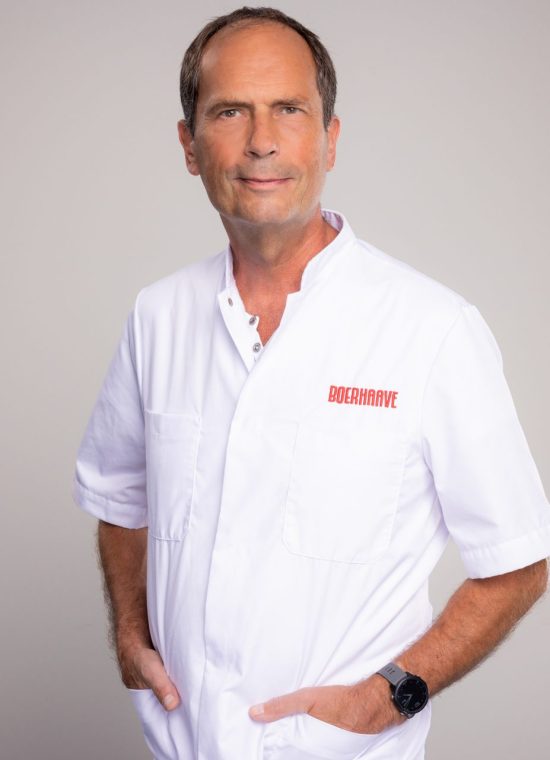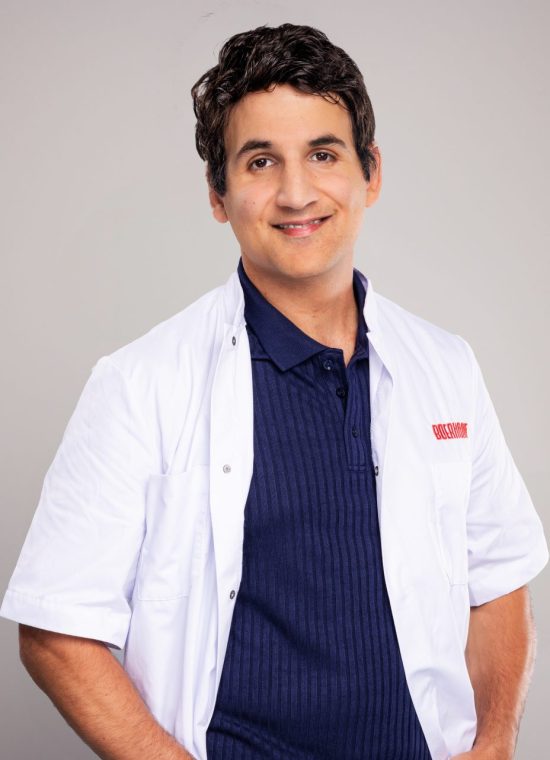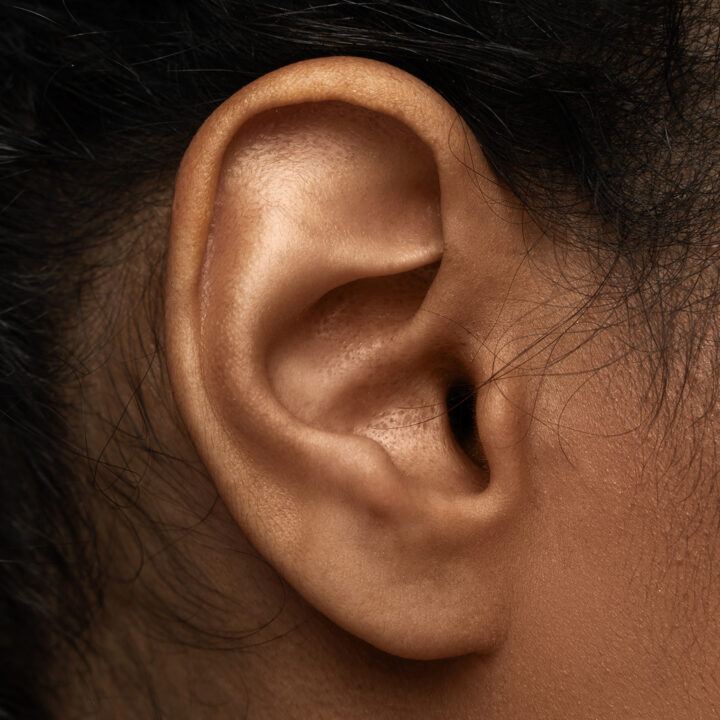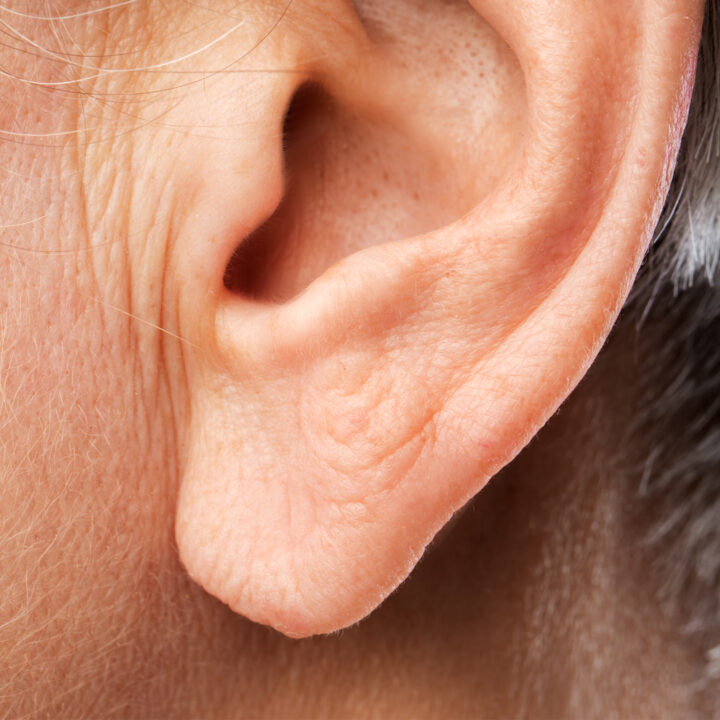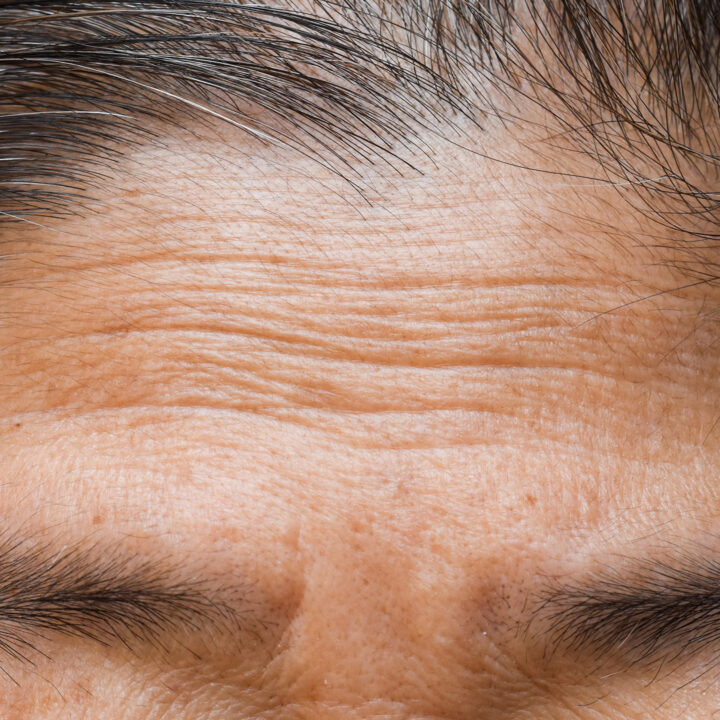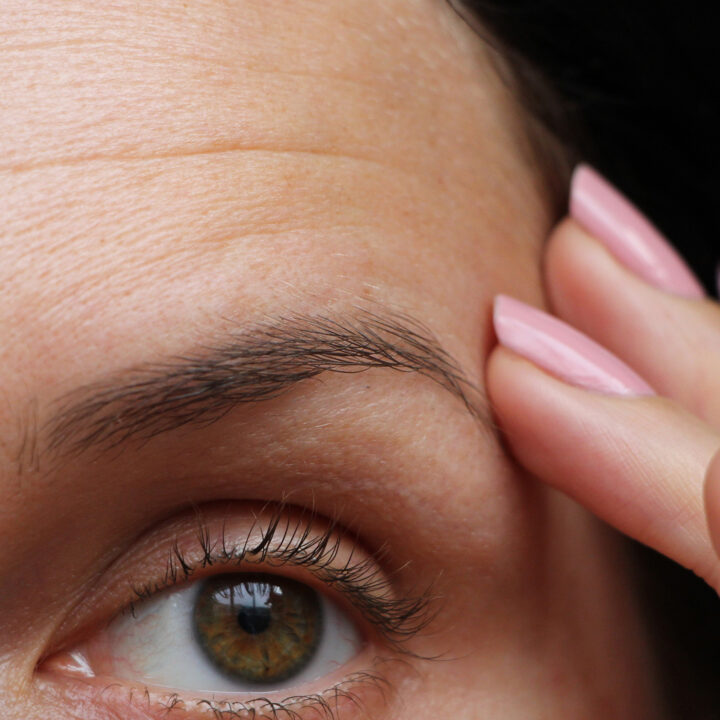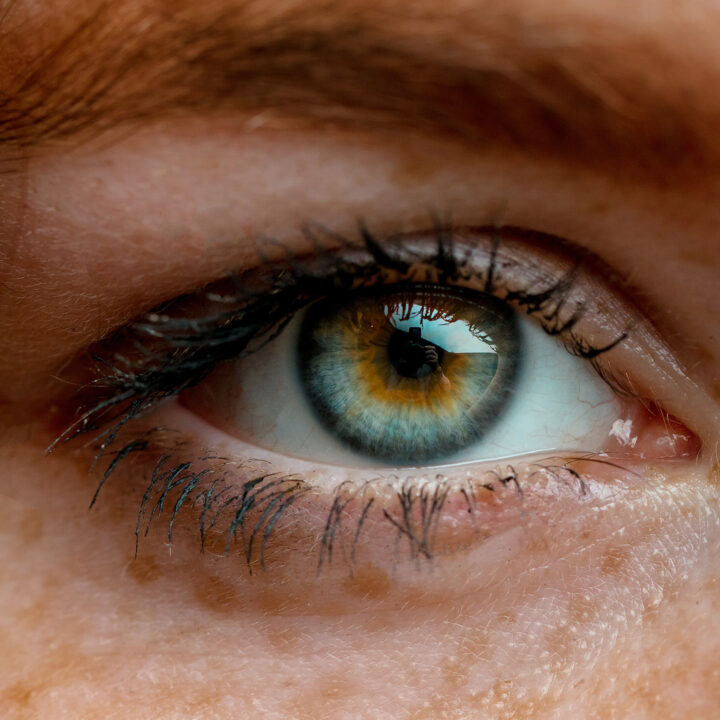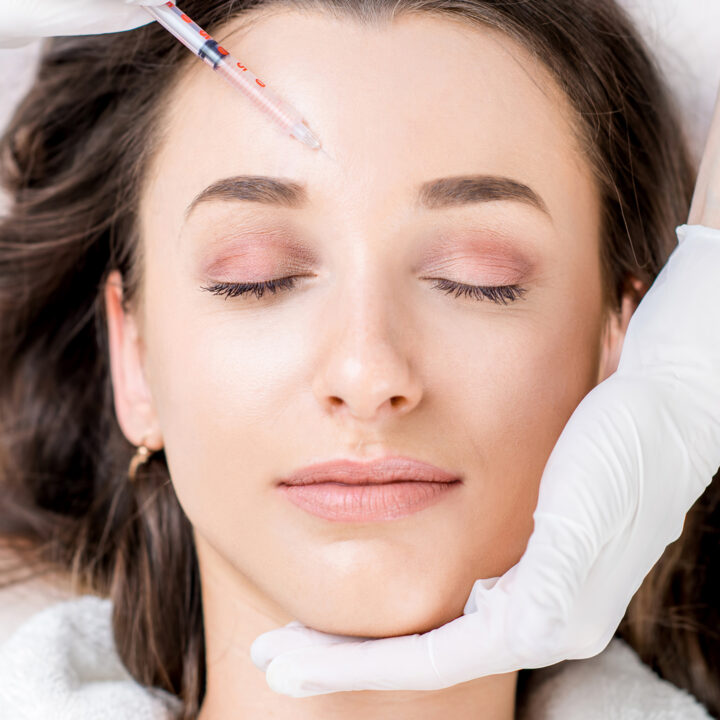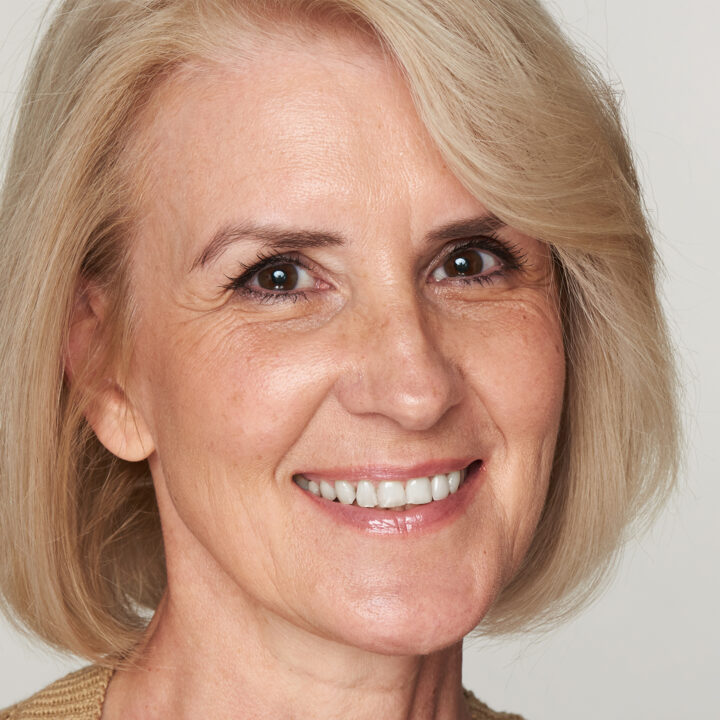S-lift
Your skin type, age and the extent of sagging are important factors when deciding which surgical technique to apply. The s-lift is the first in a series of facelift variants.
As people age, their skin starts to lose its elasticity.
As a result, the skin of your face may start to sag. An s-lift can restore the smoothness and contours of your face, so that you look younger and more refreshed. The s-lift takes its name from the shape of the scar, in other words it is in the form of an “s”. With an s-lift, or “mini-lift”, only the skin is pulled back and not the underlying tissues of the face.
Facelift variants
There are a number of different facelift variants which vary in technique and cost. It can be seen as a three-stage procedure:
- S-lift: With a S-lift, only the skin of the cheek is lifted via an s-shaped incision (also referred to as a mini-lift). The underlying supporting tissue is not lifted.
- MACS lift: With a MACS lift (Minimal Access Cranial Suspension lift), the skin of the cheeks is lifted together with the underlying supporting tissue (SMAS) via the same incision. This variant does not make any difference to the skin of the neck.
- Face-neck lift: With a face-neck lift, an elongated incision is made behind the ear, which is used to lift the skin of the cheeks, the underlying supporting tissue (SMAS) as well as the skin of the neck.
What does the s-lift cost
01 More information
The least invasive facelift is the s-lift (sometimes also referred to as a mini-facelift or mini-lift). An incision is made in the skin in front of the ear in the shape of an “s”. The results of an s-lift can only be seen in the area just above the jawline. An s-lift does not correct jowls or “hamster cheeks”. It sharpens the contour of the jawline. It does not remedy wrinkles around the mouth, lips and eyes. An s-lift only lifts the superficial skin tissue, and not the underlying muscle tissue. If you want to do something about the lack of sculpting in your jawline, we would recommend a MACS lift or face-neck lift.
An s-lift is performed as a day care procedure and can be carried out under local sedation. If you prefer, you can also have an s-lift carried out under general anaesthetic. After the procedure, you are generally free to go home the same day.
02 Consultation
Plastic surgeon
The consultation is always held with the plastic surgeon who will be carrying out your procedure.
This consultation will determine whether an s-lift can remedy your complaints and achieve what you are looking for. The plastic surgeon will ask you a number of questions, such as your medical history, what medication you are taking and whether you have any allergies.
The plastic surgeon and consultant will focus as much as possible on you personally, any case history you may have and your specific circumstances, when discussing the intended procedure. It is therefore important to leave sufficient time for this consultation, and bear in mind that appointments can sometimes run over, although we do our utmost to ensure that you are kept waiting as little as possible. We are also there for you after your consultation, to answer any questions you may have. If necessary, an additional consultation can be arranged.
After this, the plastic surgeon will show you before and after photos of s-lift procedures they have previously carried out. They will also discuss the pros and cons of the facelift, possible complications and any risks with you. The aim of the consultation is to provide you with as much clarity and detail as possible, so that you can make a well-informed decision.
Consultants
Following on from your first consultation with your plastic surgeon, you will have an appointment with your consultant. The aim of this appointment is to tell you about the general aspects to be arranged with respect to your facelift.
03 Procedure
You are expected to arrive at the Boerhaave clinic half an hour before your s-lift.
Before the treatment, your plastic surgeon will again talk you through the procedure. They will use a pen to carefully mark your face in accordance with the operation plan for your s-lift. The operation can be carried out under local sedation, but in most cases it is performed under general anaesthetic. Your plastic surgeon will generally make an incision behind your hairline and around the ear. This forms an incision in the shape of an “s”.
After loosening a portion of the skin from the underlying tissue, the skin is pulled back towards the ear, so that the jawline reverts to its original contour. A strip of skin in the shape of an “s” is then removed.
Tisseel glue
At the end of the procedure, which takes 2 hours depending on the variant of facelift you have opted for, the skin is stitched around and behind the ear. This skin is placed under tension, because skin has been removed. Because of this tension on the skin and stitches, there is a risk that the scars may not heal very nicely. Your plastic surgeon therefore uses a skin glue, or Tisseel. This glue is applied to the underlying tissue before stitching up the incision, so that there is less tension placed on the stitches. As a result, the scar heals much more nicely.
04 After care and recovery
If the s-lift is performed under general anaesthetic, you will usually be kept at the clinic for a further 3 to 4 hours after the treatment. After the operation, you will be taken to the recovery room, where your blood pressure, heart rate and other vital signs will be monitored. You will stay there for about half an hour, after which you will rest in a bed in the day care department for a further 3 to 4 hours. You will not be free to go home until the nursing staff and anaesthetist give their approval for you to leave. In consultation with the plastic surgeon or nurse, you will immediately make an appointment for your first post-op check-up at the clinic.
Post-procedure pain
You may feel mild pain and pulling after your s-lift. You are bound to feel a pulling sensation, because the skin and tissue are slightly under tension. There may also be sensitivity around the ears. This is normal and will disappear after a couple of days.
Recovery
As with every surgical procedure, the body takes time to recover. The treated area will initially be bruised, sore and swollen. The scars may also be reddish in colour and raised immediately after the s-lift. You shouldn’t worry about this, as it is your body’s natural reaction. Swelling and bruising will usually be worse in the first 3 days after the procedure, and will then gradually start to disappear.
Your skin will feel hard for a couple of weeks. This is because the layers of tissue are adhering together and scars are forming. The skin may sometimes be quite sensitive. This is a normal reaction to the procedure and will gradually disappear. The stitches will dissolve and swelling and bruising will gradually subside.
Scar cream
At your first check-up, you will be given a scar care cream to take home with you. Once the wound has closed and the scabs have disappeared, you can start applying the scar cream. If you apply this cream to the closed wound twice a day, you increase the chance of the wound healing nicely.
05 Results
The results of an s-lift will not be visible until after a couple of months. Your face will then have taken on a more beautiful shape and the contours of your face will be more pronounced. The results of an s-lift are generally long-lasting However, if your skin and muscle tissue continue to sag, it may be necessary to undergo another procedure. A more extensive facelift generally has more lasting results than an s-lift, as the layers of tissue tightened are deeper. The effects of an s-lift generally last for a much shorter time.
Even though you will already see some results early on, the final results of an s-lift or mini-facelift will not be visible until after a year. The body needs this much time to fully recover from a surgical procedure. So give your face enough time to recover.
Scars
The scar from an s-lift is mainly hidden in the hairline, with only a small part of it passing in front of the ear. The plastic surgeon will do everything they can to ensure that the scars are virtually invisible. The scars will initially be red and swollen, but this will start to fade after a couple of weeks. It is useful to know that a scar takes 1 to 1½ years to completely calm down. Take care to keep the scars out of the sun, and treat them carefully. The clinic will give you a special scar care cream to take home with you.
06 Risks and complications
It is important you are aware that every surgical intervention can entail risks and complications. Plastic surgery procedures are in principle carried out on healthy people, so the risks and chances of complications are low. We make sure any risks are reduced to an absolute minimum, by providing plenty of information, taking a thorough medical history (noting your case history, including medication, any problems experienced in previous operations, allergies, etc.) and applying our professional procedures.
An s-lift is a very common procedure. In experienced hands, the risk of complications is very low. An s-lift entails the same risks as any other operation. You can help reduce certain risks by carefully reading through the instructions you are given prior to your s-lift.
Possible complications of an s-lift may be:
- Haematoma (blood clot under the skin which has to be removed)
- Adverse reaction to the sedation
- Haemorrhaging
- Infection
- Change in sensitivity
- Permanent scars
- Damage to underlying structures
- Unsatisfactory aesthetic result.
Smoking
Patients who smoke or use tobacco or nicotine products (such as nicotine patches and chewing gum) at the time of their surgery have a greater risk of complications, such as skin loss and impaired wound healing. People who are exposed to passive smoking may also have an increased risk of complications such as these. What’s more, smoking may have a negative effect on the anaesthesia, which may in turn lead to an increased risk of bleeding. People who are not exposed to tobacco smoke or nicotine-containing products have a significantly lower risk of such complications. It is important not to smoke for at least 2 weeks prior to the operation and to keep this up for the entire recovery process.
More information
Plan your appointment now in our agenda or let us call you back.
